#worldbuilding research
Explore tagged Tumblr posts
Text
WorldBuilding Ask Game
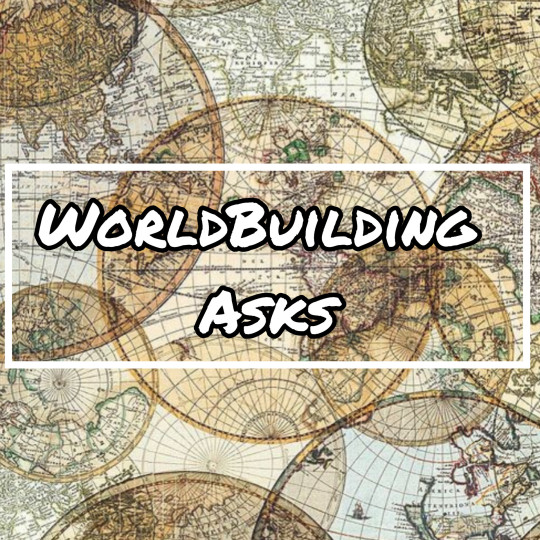
Here is a little ask game for WorldBuilding in your WIP to pad out one country or all of them! Use it for yourself or ask a friend and spread some love. Focus on a particular section and have fun!
Geography
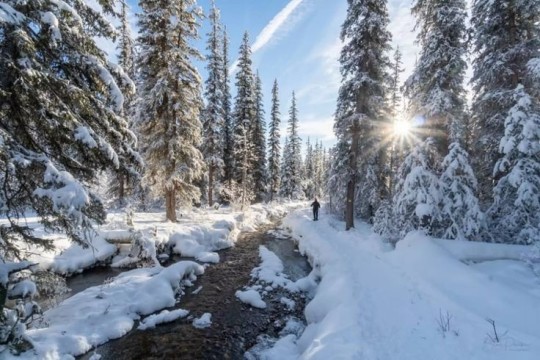
What does your world look like? What's the biome? Are there different ones?
Are there any oceans? If so, are they accessible? Are they a reliable source of travel and food?
Are there any rivers in your world? Any lakes? What's the longest river? Deepest lake?
Is there a safe supply of drinking water? If not, why not?
Are there mountains in your world? What's the highest one?
What is the weather like? How does this effect life?
What animals inhabit the world? What animals are indigenous or considered exotic?
What are some natural features your world is famous for? Is your world considered beautiful?
How many countries in your world?
How are countries divided? By natural lines or by agreements?
Population

What's the population like? Is it large or sparse?
Is there any factors in population density? Do more people live in a certain area more than elsewhere? Why is that?
Are there different peoples living in your world? If so, how do they get on?
How important is nationality? Are foreigners tolerated? Or are they unwelcome?
What countries get on? What countries hate one another?
Are there any important cities? Why are they important?
What's the architecture like? Are there any outside influences?
What's a typical building material? What's considered an expensive feature to include?
What is infrastructure like? Are roads and railways in good condition?
Is there public transport? Is it reliable?
Government
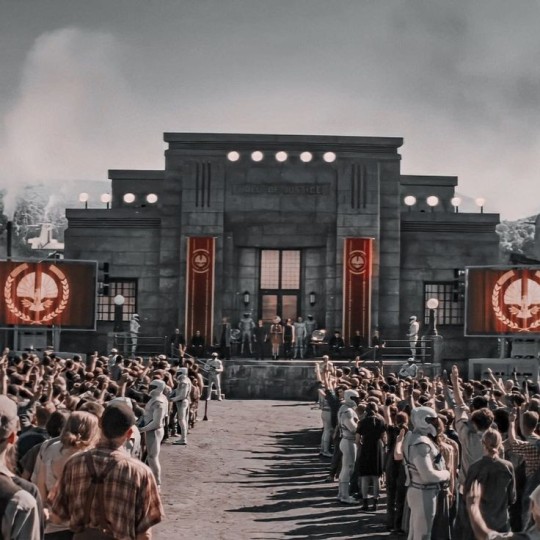
What system of government does your world adhere to? Is it popular?
Where is the seat of government?
Are there different governmental agencies?
Are there political parties? If so, what are their goals?
How much control does the government have over the average person?
Can your people vote? If not, why not? If so, who has/hasn't the right to?
Are there any parties or organisations that oppose the government?
How does the government crack down on sedition?
Are people allowed to criticise the government? If so, how? If not, how do they get around it?
How are laws made? Who makes them?
Is there any odd laws in your world?
What are some punishments to crime? Are they considered fair?
What crimes are unfathomable for the people?
Who handles justice? Is justice obtainable for all?
Are there any police? What's their reputation?
What role does the military play in your world?
Who controls the army? Head of state or government as a whole?
Is it considered a good career path?
Who can join the army? Are there any restrictions?
What is your world's stance on war? Are there any neutral parties? Or particularly warlike ones?
Commerce and Trade

How is trade done?
Is currency universal or dictated by region?
How is your economy going? What effects it?
What trade is your world known for?
What are some exports? What must your world import?
Are any goods considered luxurious?
What services are available in your world? What services are niche?
What sort of work is common? Is work readily available?
Who is expected to work?
Are workers treated fairly or unfairly?
Are there any ways workers are protected? If not, what are some consequences?
Is your world more reliant on technology or on labour?
Is agriculture possible in your world? If so what can your people grow?
How big is industry? What goods can your people make?
What resources can your country exploit?
What are some barriers to trade and commerce?
Is your nation known for quality? Or Quantity?
Who does your country trade with most often? Who do they boycott?
Are there any major ports in your country?
Are there any banned goods? If so, is there a black market for their purchase?
Society
How society expect one to behave in public? Are there different expectations for different people/genders/ranks?
Is there a social order? Can one move up the ranks?
Is there any considerations made on account of rank, gender, age or position?
What is considered a social faux pas?
Are there any gestures or actions that are considered rude or socially unforgivable?
What would utterly shock somebody to see somebody do?
What are some opinions that are normal for your world but can be considered subversive in real life?
How can one rise up the status ladder? Is there much trouble to do so?
What denotes a person's place in society?
How is life different in cities compared to life in the countryside?
Daily life
Where would someone go to buy their weekly shop? Is food easy to come by?
What would be the daily routine of the wealthy? The common man?
How is hygiene handled in your world? Where does one go to spruce up?
What would be some day to day tasks one might face?
What is the favoured means of travel?
Are there any problems in your world that could effect a daily routine? Potholes? Gigantic spiders? Acid rain?
What ammenties would an average person expect to have access to?
Where would one go if they are injured or ill? What's healthcare like?
Do people feel safe where they live? Are there any places somebody might face danger?
How do people communicate? Is it difficult? Why?
What do people do for fun? What's considered normal fun versus hedonistic?
What pastimes are common? What kind aren't?
Is education valued?
Is there access to education? If so, for who?
Are the population educated? If so to what extent?
Family Life
What is the typical family set up?
Is extended family important?
Who can be considered family? Who can't be?
Is marriage considered a duty? Or is it more of a personal choice?
Is divorce possible?
Can people adopt children?
What happens to orphaned children?
Are children important? If not, why not? If so, why?
What are some typical toys children play with?
What are some games children play with one another?
How is in charge of household chores?
Is there a hierarchy in families?
Are children expected to take on certain roles?
What is the living situation like between the different ranks? Are the roles different?
What's considered the proper way to raise a child?
Culture and Languages
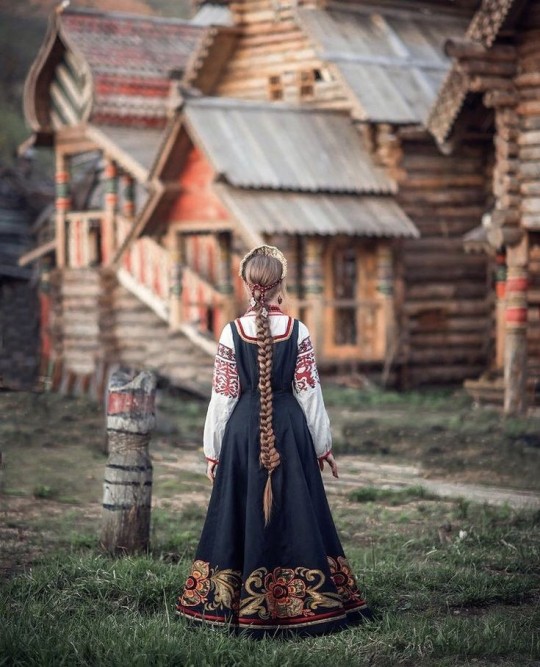
Are there multiple cultures in your world? How do they differ? Do they mesh well together?
How are cultures similar? How are they different?
Are there any traditions in your world? How important is tradition?
What are some rituals your culture undertakes?
Are there any special days? Events?
What are some traditional values in your world? Does it effect daily life?
Are there traditional clothes for your world? Are they something somebody wears on a daily basis or just on occasion?
Are there any rules around what people can wear?
What would be considered formal dress? Casual dress?
What would happen if somebody wore the wrong clothes to an event?
What languages are spoken in your world? If so, how do they sound?
Are there any dialects? If so, how do they sound?
Are most people monolingual? Or bilingual? Or multilingual?
Are there any languages that are closely related?
What is considered a universal language?
Religion
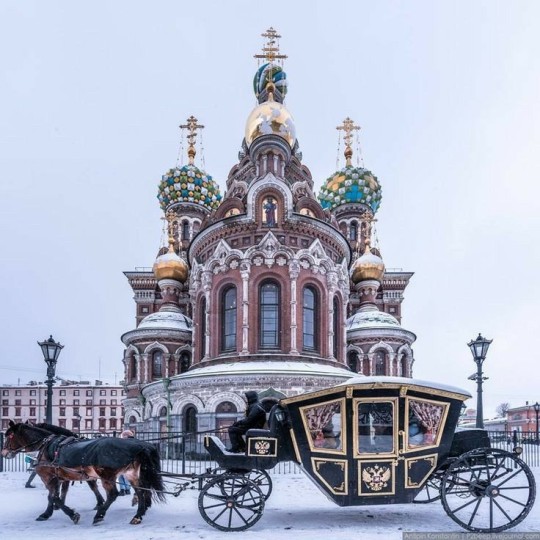
Is religion a thing in your world?
Is religion a staple of life or just a small part?
Does religion affect politics, personal lives and affiliations?
Is your world sectarian? Or ruled by religion?
What are some influences religion has on daily life?
What sort of religion is it? Monotheistic? Polytheistic?
What are some myths your people believe in?
What common rituals does one undertake on a day to day basis?
How does one please a deity?
Where do your people pray? How do they?
What symbols would denote a follower of a certain belief system to a stranger?
What places or objects are considered sacred?
Are there religious orders? If so, who can join?
Is there tolerance or violence over religion? If so, between which faiths?
Food and Drink
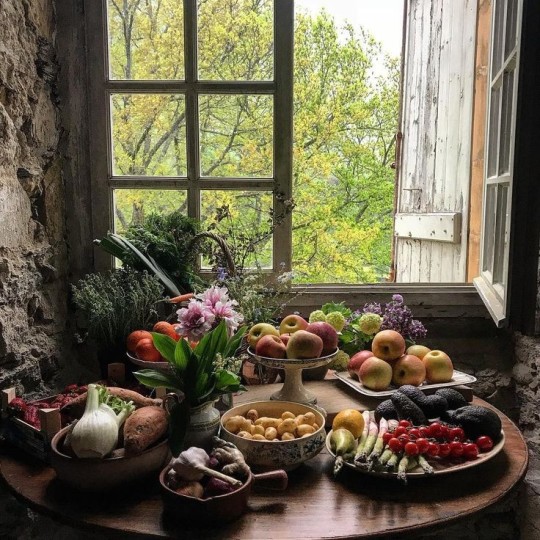
What are some traditional dishes in your world?
What would be a basic diet for the common man?
What's considered a delicacy?
Is there a societal difference in diet? What are the factors that effect diet between classes?
Is there any influence from other cuisines? If not, why not? If so, to what extent?
What would a typical breakfast contain?
What would lunch be?
What would be a typical dinner?
What meals are served during the day?
What's considered a comfort food or drink?
Are there any restrictions on who can eat what or when?
Are there any banned foods?
What stance does your world take on alcohol? Is it legal? Can anybody consume it?
Are there any dining customs? Are traditions?
Is there a difference in formal meals or casual meals? If so, what's involved?
Are there any gestures or actions unacceptable at the dinner table?
How are guests treated at meals? If they are given deference, how so?
Are there certain rules about how one can prepare food?
Are there any restrictions on eating with certain people?
How is food generally prepared by?
History
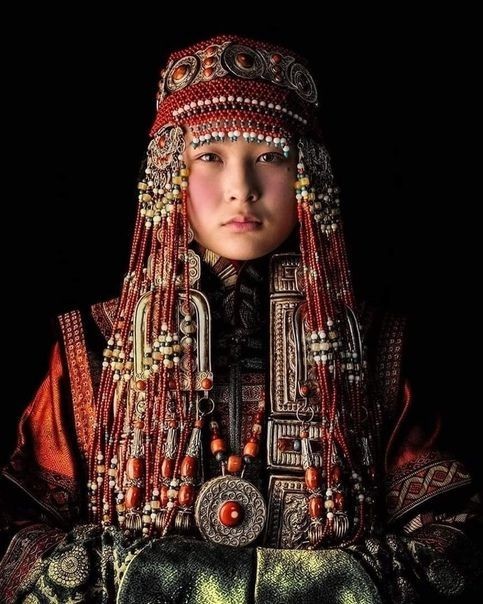
Who are some notable figures from history?
Who founded the country?
Is history looked back on with fondness? Or do your people rather forget?
Are there any heroes in history? Any villains?
What are some highpoints in the history of your land?
What are some points of history nobody likes to speak about?
Does history effect your land, people, culture, language in the present? If so in what ways?
What historic monuments are still around in the present day? What has been lost?
How do people learn about history? Do they learn the truth? Or just an abridged version?
What's a historical event that is important to the story?
#WorldBuilding Ask Game#WorldBuilding list#WorldBuilding reference#WorldBuilding research#WorldBuilding resource#WorldBuilding#writing#writeblr#writing resources#writing reference#writing advice#writers#Writing resources writing reference#Writing reference writing resources#Ask game#Writeblr ask game#writers on tumblr#spilled ink
2K notes
·
View notes
Text
Can someone please, please draw Fingon as a badass Kazakh hunter with his golden eagle?
I mean, how perfect are these:


From this incredible photography collection by Kevin Pepper.
79 notes
·
View notes
Text
Okay here's a question for any of ya'll who know biology: would growing up in a low gravity environment (like a fifth of Earth's gravity) affect someone's height, and if so, would that extra length be permanent or something that gradually falls away if they are eventually acclimatized to living in Earth gravity?
This is a research question for my book because I'm too uneducated about human biology to even try taking a guess at this.
#Worldbuilding research#writeblr#writing#fiction#idk how to tag this#sci fi#ya fiction#children of the stars
6 notes
·
View notes
Text
Worldbuilding Research: The Theory of Classical Elements
One of the core design questions to Drak'Arna's world is 'What if the theory of classical elements were true?' that the elements of Air, Earth, Fire, and Water were the foundational building blocks of well, everything. Below is a summary of what will be a research article found on the Campfire wiki for this world.
The Theory of Classical Elements was formed from a few sources across numerous cultures and was discredited by Ja'far al-Sadiq and Rhazes in during the Scientific Revolution in the 1600s. Atomic Theory is what explains the material basis of our physical world.
The theory while under what we understand to be Chemistry today, was used amongst many ancient philosophies to explain patterns in nature. The term 'element' in this context is to refer to a state of matter or a type of energy or force rather than what we know as the Chemical elements today.
The number and quality of these classical elements vary depending on the culture the philosophy originates from. Certain philosophies around the elements also impacted culture and the arts which is still seen today with the correspondence of these classical elements in various works of pop culture like Journey to the West and Avatar the Last Airbender.
While I haven't taken on every aspect and quality from these various philosophies, some have been an inspiration to my worldbuilding for Drak'Arna. Notably the States of Matter, Aristotle Qualities, Greek, and Chinese Generating & Overcoming interactions.
To read more on this, I recommend these articles on related discredited theories:
https://www.chemeurope.com/en/encyclopedia/Classical_element.html
https://www.chemeurope.com/en/encyclopedia/Elemental.html
https://www.chemeurope.com/en/encyclopedia/Luminiferous_aether.html
https://www.chemeurope.com/en/encyclopedia/List_of_discredited_substances.html

The purpose of this table is also to highlight some of the elemental philosophies from across our world.
The table pictured above is what I compiled from the above links as well as Wikipedia deep-diving. Note that I haven't dove into the esoteric layers there are many schools of thought, belief, and practice across occult and pagan traditions. When looking through these I tend to recommend exploring the history for understanding where some people of the past may have taken elements (heh) from other cultures - it's good to be aware of that, but also when exploring reconstructed traditions hearing lived experiences and academics explaining their history adds a better depth to understanding than just a wiki-dive.
I'd like to emphasize that I do not use every correspondence in my world-building. I think it's incredibly important to treat traditions, living or ancient, with respect. For example, I do not feel it's appropriate for me to use the Native American Tradition with medicine as I do not share heritage with them. However, if I felt that the aspect of medicine associated with seasons would be fascinating to explore further, I would talk to people to understand how to do so respectfully. I admit using this as an example has piqued my curiosity. Such is the way of learning!
~ ~ ~
What kind of correspondence have I used?
I mentioned above that the notable examples are the States of Matter, Aristotle's Qualities, the Greek Elements, and Chinese Generating & Overcoming Interactions. So I'll elaborate on them here:
States of Matter - this is something that is still referred to today and usually highlights the various 'states' an element can be in. For example, Water's states are:
Gas: Vapor.
Liquid: Water.
Solid: Ice.
Plasma: Uh... There isn't one. (Well in our world ;) )
An example of what this inspired is when looking at what mixtures of elements are for magical purposes, Mostly Water + Lil bit o' Earth = Ice.
Greek Classical Elements - which is to say are very 'classic' in pop culture too. But this is your usual Air, Earth, Fire, and Water.
Aristotle's Qualities - this was a further elaboration on the Greek elements which I particularly liked as it showed the connections between them.
Air: Hot and Wet.
Earth: Cold and Dry.
Fire: Hot and Dry.
Water: Cold and Wet.
I used these particularly when working on the biomes and climates of my world when figuring out how certain areas were elements mixed - what would they include or lack?
Using Earth-like qualities. The equator is Hot and the Poles are Cold. However, my hemispheres are split based on which is the 'dominant' element. So the North Pole is Cold + Wet, predominantly water with an ice cap. While the South Pole is Cold + Dry because it's in the Fire hemisphere but because I have the Poles as 'Cold' the other quality of Fire is 'Dry' so this has meant that the South Pole is more of a cold-dry badlands desert.
Chinese Elements - I've always liked the Generating and Overcoming interactions of these five elements. They've played a particular part in both the climates and biomes of Drak'Arna but I've varied it by which element is 'dominant' in the area such as the aforementioned Poles and Hemispheres example.
~ ~ ~
That's all for this article, I imagine I'll add more to it as I go but this is a look into how I've used the Elements in my worldbuilding. Feel free to ask any questions in the comments below or my ask box but I'd love to know if there's a show or book you love where they use the elements as a form of magic! I know I've harked on about AtLA but there are so many good shows out there.
#worldbuilding#worldbuildingblr#worldbuilding research#worldbuilding inspo#worldbuilding progress#worldbuilding elements#elemental magic#elemental magic system#worldbuilding update#classical elements#world of drakarna#drakarna worldbuilding#drakarna#wrennavere writes#wrennavere worldbuilds
3 notes
·
View notes
Text

👀
#cosas mias#worldbuilding#imperialism#exactly#I mean beyond that it's a very interesting thing to know research and write about#you should always know where your food and the things you use in your daily life come from
19K notes
·
View notes
Text
I enjoy a good "the Adeptus Mechanicus would be indifferent to gender because they're all about transcending the flesh" headcanon as much as the next nerd, but at times I think it would be more interesting – and also much funnier – if their whole Thou Shalt Not Fuck With The Standard Templates (Unless You're Part of the Secret Cool Kids Club) attitude extended to gender as well. Any novice can be a he/him or a she/her, but you need to reach a certain rank before it's considered appropriate to go by it/its. The existence of neopronouns as occult knowledge permitted only to the worthy.
#gaming#tabletop gaming#warhammer 40000#warhammer 40k#wh40k#adeptus mechanicus#admech#gender#pronouns#worldbuilding#swearing#junior magos censured for inappropriate gender research
3K notes
·
View notes
Text
Fantasy Worldbuilding Questions (News and Media)
News and Media Worldbuilding Questions:
What spreads information – newspapers, websites, pamphlets, word-of-mouth, a technologically advanced communications system?
What is considered newsworthy in this world?
Who owns each news platform (are they public or private, impartial or propagandistic/biased)?
Who are the public figures most often scrutinized in news networks (and why)?
Where do the most significant or newsworthy events happen in this world (and to where does their news reach)?
Where does the typical person go to find out what’s happening in their immediate community, or the wider world? Can they find this out?
When have investigative reports or rumor mills changed history, public sentiments or policies?
When do major news announcements or public addresses typically take place?
Why is the media either free, silenced or captured/biased?
Why might people in this world trust or distrust news media?
❯ ❯ ❯ Read other writing masterposts in this series: Worldbuilding Questions for Deeper Settings
#worldbuilding#writeblr#writing tips#writing advice#fwq#fiction writing#novel writing#writing#news and media#journalism#writing research#media ecosystem#news reach#information infrastructure#communication infrastructure
262 notes
·
View notes
Text




My @isat-secretsanta-2024 gift for @pillowspace!! They said they’re fascinated by secret research lab AUs, and, in a case of incredible serendipity, that’s been my favorite trope since I was like 8 years old. So I may have gotten possessed and spent three weeks straight worldbuilding a whole entire thing.
So! This comic is my gift for Pillow, but I’m planning to write a fic set in the same AU eventually, titled Desperate Measures. It will take place in a modern day Vaugarde and focus on Odile, Loop, and Siffrin, alongside other more-or-less-familiar faces. And by “eventually” I mean this is now my highest priority project, but it’s big enough that it may be a couple months till I have anything else to show!
Journal transcript under the cut:
wavelength of 690nm, which means it would activate L cones nearly exclusively. If we're correct in our mapping of wavelength combinations to color terms in historical documents, then this would be considered a shade of "red".
I still don't know if I believe it. It seems fantastical, like I've become a character in a children's story, chosen to leave behind the world of the mundane and enter a realm of magic. Or like this is all a dream, and as soon as I'm about to see the shade my brain will realize it doesn't actually know how to show me something I've never seen before, so it'll put me in front of a full auditorium instead; and then I'll forget how to speak Vaugardian, or realize I'm not wearing any pants, or both, and then I'll wake with a start back in Ka Bue.
But however strange it seems, I can't think of any reason they'd have to lie about it. Why else all the NDAs? Why else contact me? So I must assume that it's true. That after years of trying to solve humanity's loss of color vision — a project that began long before I joined it, and that I expected to continue long past my time — I am about to simply be shown a perceivable color. That's the strangest part, really; that this breakthrough isn't related to the mechanisms of sight, but rather, the thing seen.
14/1/29
I thought perhaps they'd synthesized it somehow. Stumbled upon the correct combination of chemicals by accident. Maybe even invented a new sort of craft.
I didn't expect their source of red to be alive.
#FINALLY I CAN TALK ABOUT IT! THE PROJECT!! YAY YIPPEE#in stars and time#isat odile#isat loop#isat#odile#loop#odile & loop#desperate measures AU#pillowspace#silverstarsart#for how much i love secret lab aus it’s wild i’ve never done one before#it just feels sooo self indulgent lol#also. requires a lot of worldbuilding#if you want to really get into the research you gotta do your fucking research#i know SO MUCH about the biochemical mechanisms of sight now y’all#did you know that capturing a light photon of the correct wavelength turns retinals trans?#we disseminate only the most vital of scientific information here on beneathsilverstars dot tumblr dot com
388 notes
·
View notes
Note
Recent article on NPR about the history of artificial light somewhat frustrated me -- they portrayed all of pre-kerosene history as dark and heinously expensive at all times. Thing is, the writers based their findings solely on tallow candles, & ignored oil lamps, beeswax candles, clever use of refraction & outdoor light including moon/starlight... Also seemed to ignore the ubiquity of hearths / cook fires. Was wondering if you'd be willing to talk about non-tallow light? This isn't to ignore that truly, artificial lighting WAS much more difficult & expensive for much of human history, but acting like tallow candles were the ONLY light source seems very silly! (Plus your other lovely post about bottles of water used to make those candles more efficient via refraction & focus)
I'm betting the article you mean is this one - which refers back to this one.
For matching reference, my own posts about period lighting are here, One and Two, including observations about painting walls white, how to light candles and lamps without matches, and several other matters.
*****
It didn't take too much listening before I got tetchy, because the first half of this podcast seems more about mocking how WEIRD and PRIMITIVE old-time people were, than passing on any useful information.
Despite the presence of Jane Brox (author of "Brilliant: The Evolution of Artificial Light") whale oil only gets touched on in passing, and olive oil isn't mentioned at all.
Instead she starts talking about using oily seabirds (stormy petrels) as "candles", despite this scholarly study concluding that it was something talked about far more than done, besides being so very, very localised that its relevance to the history of lighting is very, very small.
But hey, WEIRD and PRIMITIVE, right?
*****
By contrast, making candles was so commonplace that it was another of those jobs which created surnames. Fletcher once put feathers on arrows, Cooper made barrels, Fisher, Miller, Baker and Farmer are obvious, and Chandler used to make candles.
Lampier, of course, made lamps, which helped keep those naked candle-flames away from anywhere they shouldn't touch. The man on the left is making the lantern bodies, the one on the right is shaving sheets of horn as windows.
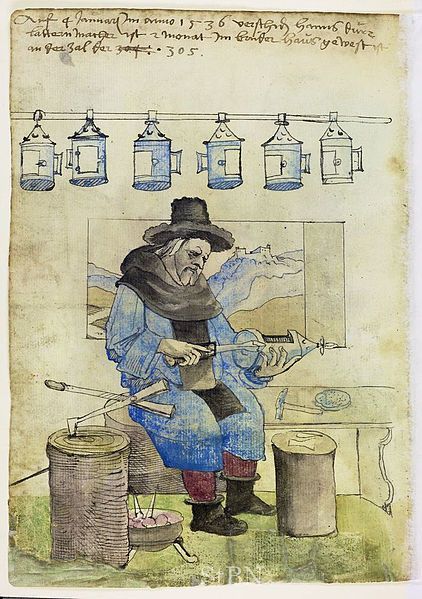
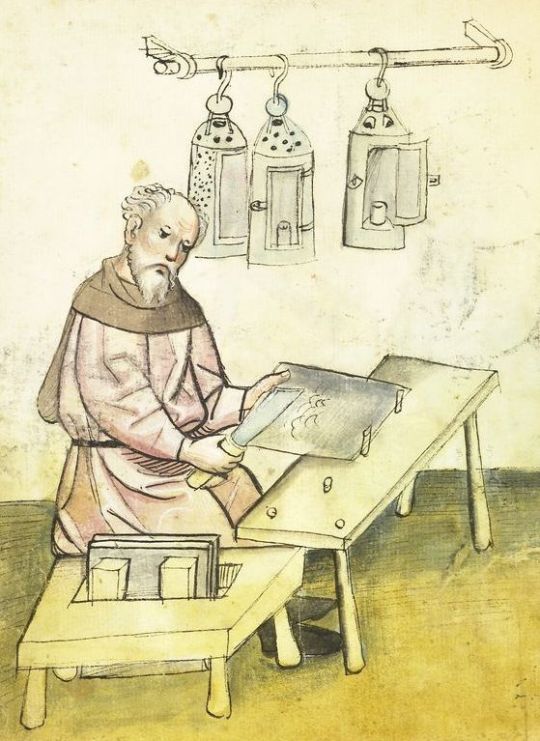
It's cheaper than glass, less easily broken yet is translucent enough, when shaved properly thin, to give quite adequate light.
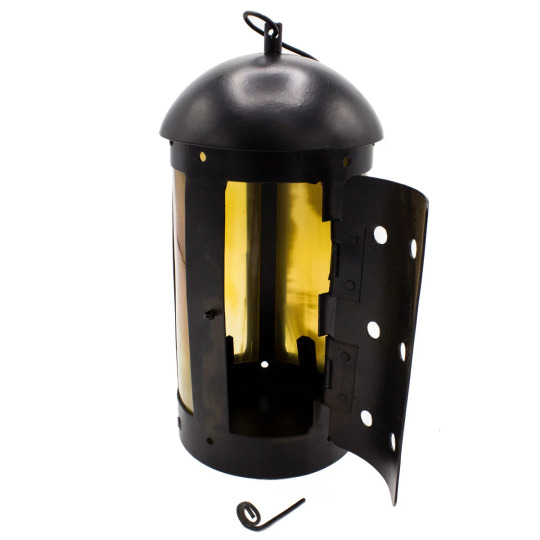
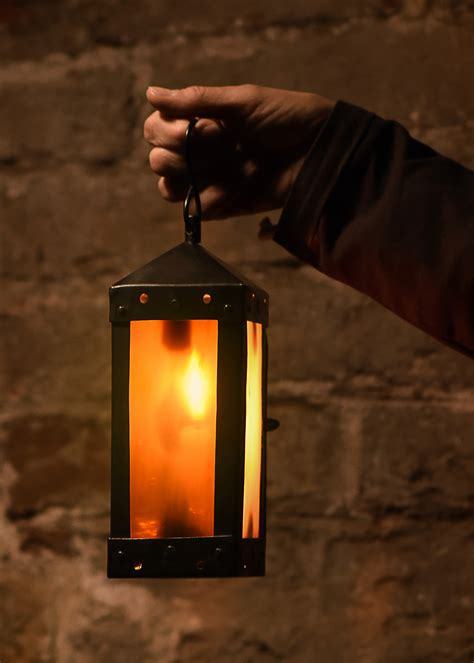
*****
The podcast has a digression about measuring the light output of a reproduction Ancient Babylonian lamp. Here's an original and a repro.
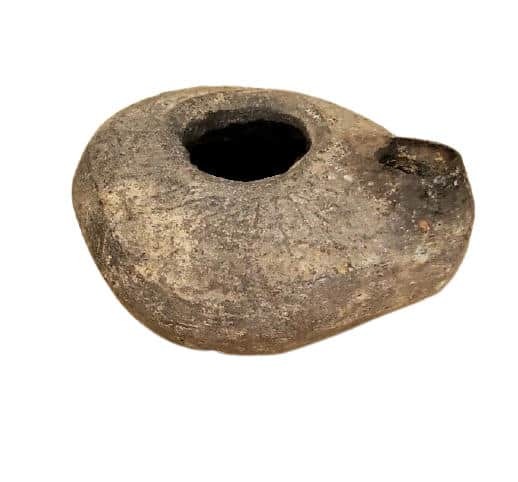
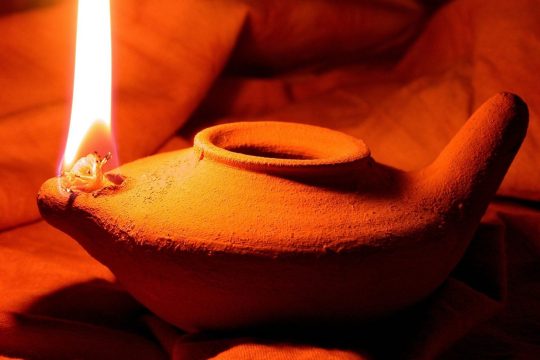
Yet that too says nothing about what fuel the lamp is or should be burning - olive oil, traded all over the Mediterranean by ancient olive-growing cultures.
These are Roman oil-lamps, from simple and cheap to elaborate and costly.

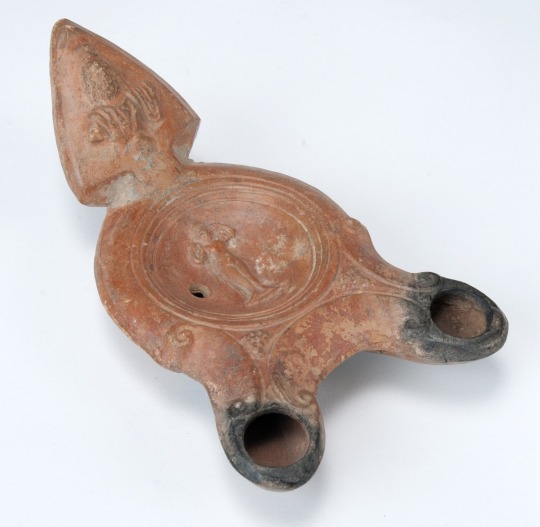
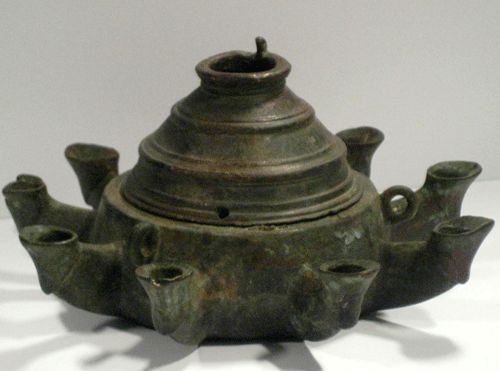
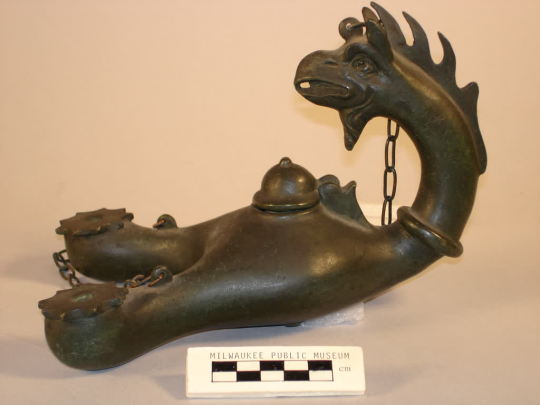
As for beeswax, so far as the podcast is concerned might as well not exist, despite being a by-product of honey, which was THE principal pre-sugar sweetener for centuries when not being made into all that mead whose existence, production and quaffing nobody questions.
Oh yeah, and then there was the amazed discovery (2:40 / 1:25, depending on which you're listening to) that melted beef fat "...smells really nasty, like, ANIMAL nasty,"
Why is this guy surprised? It's part of an animal!
*****
It's the same sort of infotainment ignorance as displayed by this TikTok twit, right up to complaining about the effort involved in preparation of anything because not having powered appliances was so labour-intensive, oh woe. Yes, it was, welcome to any historical period before about 1920. That's where "the daily grind" originates.
However the implication (listen, it's there) that cattle were raised just to provide fat for candles is ludicrous. The fat was a by-product, not a main one, and was often a butcher's side-line, while members of the Chandlers' Guild only worked with superior beeswax.
I don't think you could make candles like these with tallow:
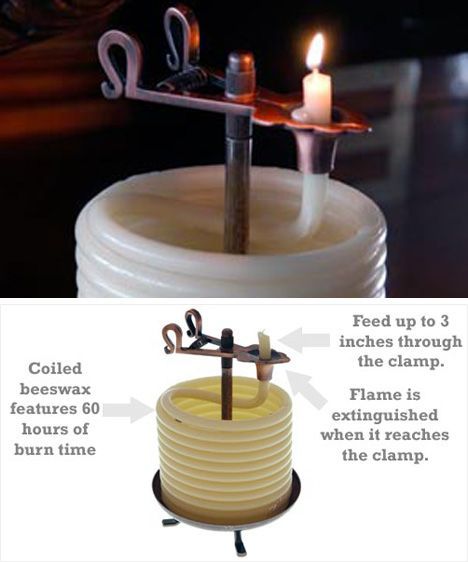
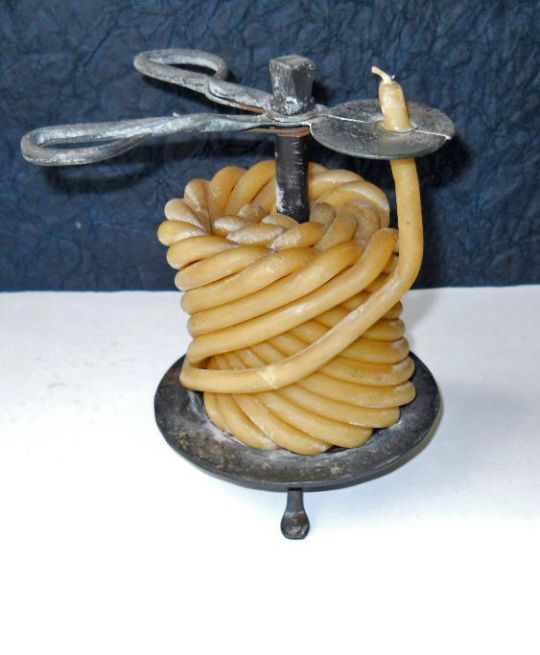
...and you definitely couldn't make one meant to be hand-held.
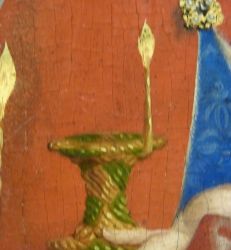
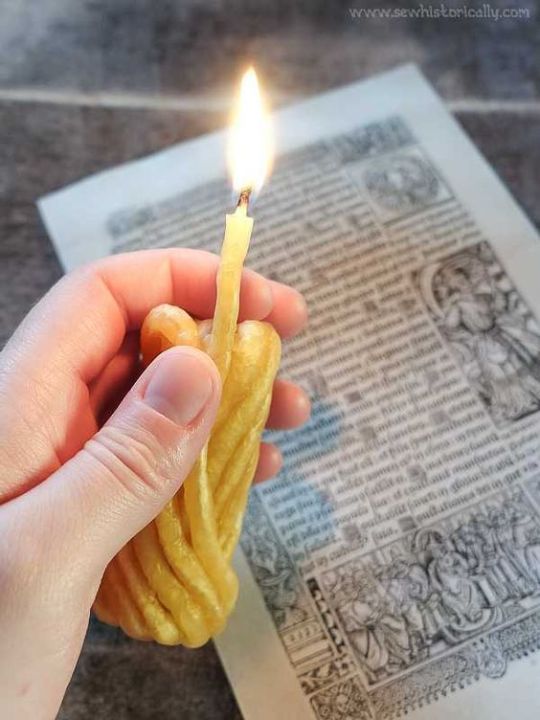

Picture evidence shows, by their clothing, the class of society who bought these, and tallow-greasy fingers would have been a no-no.
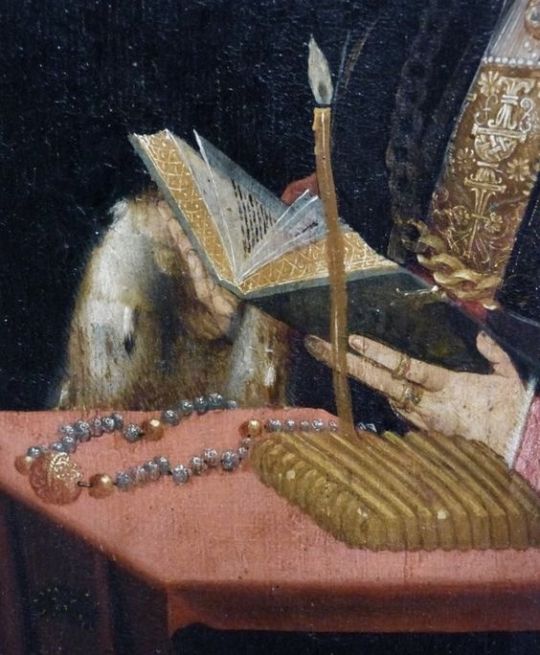
A Chandler didn't make individual candles. By the time that fresh batch is hung up, the first batch away down at the end is cool enough to be dipped again.
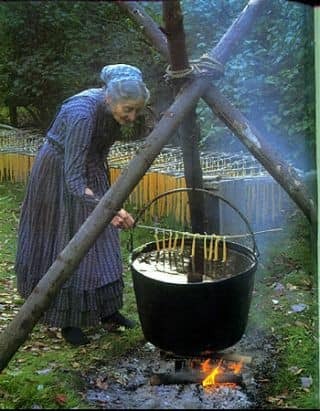
A chandler's shop in a medieval city would look very similar, and often had a horizontal wheel on which to hang each batch of candles, rotating them up and around to cool, then back to the dipping pot. Non-modern people may not have had modern tech or time-and-motion studies, but they weren't stupid.
*****
By contrast, the podcast's disparaging attitude of WEIRD and PRIMITIVE is emphasised by what seems a deliberate avoidance of anything which counters it (examples of that in my own posts) and finally at 11.24 / 9:50 came this:
"Even when you get all the way to the 1700s (...) most people are still subsistence farmers, living in some kind of hut, trying to grow enough food not to starve to death (...) and light? Light still comes from finding stuff that's lying around and just lighting it on fire."
Some kind of hut...
Stuff that's lying around...
After making such a declaration, I'm surprised - since they'd been implying it for half the podcast - someone didn't just go ahead and announce that "there's some lovely filth down here..."

That's when I stopped listening.
Enough is enough, and I'd had it.
*****
ETA:
cc: @asmuchasidliketo :->
Here's a photo of what purports to be a Petrel (not petrol, that's something else) Candle, held in the Pitt-Rivers Museum, Oxford. It's mentioned in that scholarly article I linked above.

Just as "one swallow doesn't make a summer", so one - and only one - known example of this, which may have been a fake-up to spoof the Southerners, doesn't prove it was a common or even rare practice.
There's another reason to take this with a big pinch of salt, so maybe Jane Brox was on a low-sodium diet when she wrote her book.
Creatures with a layer of fat or blubber for insulation all have it like any other form of insulation, on the outside, where it does some good. A wick passed through the inside couldn't draw on it for fuel since there's a layer of muscle and another of internal organs for the oil to get through first.
The cropped-off bottle just visible to the left is a far more likely way seabirds became lamp fuel: by rendering out their oil. This oil is from the Northern Fulmar, Fulmaris glaciaris (or glacialis, I've seen both. Same bird regardless).
Incidentally, the Wikipedia article on European Storm Petrel mentions a supernatural connection, that the petrels were the souls of drowned sailors, and killing them is unlucky.
Not just killing them but making them into candles sounds like A Bad Idea, and is yet another reason why, IMO, the candle thing may be a folktale, or a deliberate leg-pull, or...
Let's just say "improbable" and leave it there. :-P
461 notes
·
View notes
Text
There was only one couch
Tfw you cannot find the jayvik fic you crave so you write it yourself 🙃
I also gotta preface this with - I cannot write science talk for the life of me, in my defense they are sleep deprived so if it doesn’t make much sense, it’s not supposed to 🙈
—————————
They’ve been stuck at this problem for hours, any potential paths they managed to come up with immediately shattering after but a couple pokes of logic aimed to test the solidity of their foundations. Like bubbles popped by a child’s finger. Like heated corn kernels. Like dreams of making a difference-
Viktor’s too tired to think in metaphors.
He drops the pencil and swivels in his chair, facing Jayce who’s already draped across their shabby sofa, long legs sticking out from one end, head inclined on the armrest on the side closer to Viktor.
“What if we…build an oven?” Jayce says. “Well not like, an oven, but reverse, a device that could contain the energy and…,” he waves his hands in the air as he talks, as if that would help illustrate his train of thought, “…uhhh, we could more safely work on directing the charges? Fuck, I don’t even know what I’m trying to say.”
Viktor chuckles. He doesn’t know why he does, it’s not even particularly funny, the exhaustion must have erased any common sense of his that was left. Yet it’s…comforting to see that same exhaustion mirrored in Jayce. The same dark circles, the same bone deep tiredness weighing him down, the same look of frustration after they’ve been hitting dead ends and running in circles. It’s a shared exhaustion, just like the hard work is shared. Probably should have called it a night hours ago. They both direly need the rest.
“An oven? That would be your hunger speaking, I’m afraid,” Viktor says, reaching for his cane, grinding his teeth to gather the energy to push himself up onto his feet.
“Nah, m’not hungry,” Jayce mumbles. “We had those sandwiches for lunch. Or was it dinner? What time is it even?”
“Too late by all accounts,” Viktor says, taking the few steps towards the couch. He looks at Jayce, who seems glued to the couch and likely is planning to spend the night there. Viktor looks towards the door, but hesitates. The idea of the track across campus to his lodgings really doesn’t sound appealing.
It’s not even that far, the university tried to accommodate Viktor’s needs as best as they could and gave him a room on the ground floor, plus the building is the closest housing to the Engineering department’s laboratories. And yet, today it feels miles away. Damn his leg, damn all the stairs, and damn his hubris for yet again pushing his body beyond its limits, knowing fully well it will backfire ten folds and render him even more useless in the morning.
Jayce notices his hesitation, damn his partner’s bright mind too. He can read Viktor too well, he guesses the reason for his histation despite Viktor’s lack of complaining.
“Oh, do you wanna sleep here? I’ll head home, no problem,” he suggests way too readily, already hoisting himself up onto his elbows.
Viktor tsks and pushes against Jayce’s chest, pushing him back down into the couch.
“Stay,” he hisses. Jayce lives off campus, it would take him much longer to get home. Viktor’s not about to kick him out. And he doesn’t care for compassion either.
Jayce knows this, yet the man cannot help but be kind and caring, and though it irritates Viktor when it's aimed at him, it is also a quality of Jayce’s that he admires. He’s kind to everyone. Meets everyone halfway. Though at times they push too far, and Jayce lets them. Too kind for his own good.
Viktor shakes his head, trying to clean it, the stacked up piles of thoughts seem to have all spilled inside his brain and are rattling around. Rest. He needs to rest.
He looks at Jayce, who is still lying down on the couch, hands raised as if in surrender, big doe eyes staring at Viktor. Was Viktor too cross with him just now? He’s unable to determine. He pats Jayce’s knee in an attempt to smooth over his own prickly temperament.
“I just…I need to take a moment. Before I head out,” he tries. He hopes Jayce won’t insist. He is too tired to come up with reasonable arguments. He doesn’t wanna fight.
But Jayce doesn’t fight, he nods, then he bites his lip and opens his arms.
Hmm.
Viktor considers.
The couch is clearly too small for one grown man, let alone two.
Still it would be more comfortable than the chair.
And Viktor’s not averse to touch. Despite perhaps coming off as such. To everyone, except for Jayce.
It is true that he doesn’t like to be touched by strangers, especially unexpectedly. But he is human and just like anyone else, he has moments when he would welcome touch. Moments when he finds it comforting. And Jayce is a very tactile person. He didn’t hold back from putting a hand on Viktor’s shoulder the very first day they met, and he hasn’t stopped since. Though there was a moment near the beginning of their partnership when someone pointed out Viktor’s (alleged) aversion to touch and Jayce panicked, apologizing profusely for making him uncomfortable, and it took days for Viktor to convince him he really didn’t mind. Because that was the truth, Viktor didn’t mind. Not when it was Jayce.
Of course cuddling on the couch was an entirely different matter.
They’ve never done that before, however, Viktor wasn’t a stranger to the comfort of a warm body next to his either.
From cuddling with his parents for warmth as a kid in one too small bed, to seeking the pleasures of a lover to relieve stress, the warmth of a body next to his undoubtedly had its benefits.
And he and Jayce are friends. It wouldn’t be a big deal.
And so Viktor slowly drops his cane to the floor and lowers one of his knees to the couch, trying to figure out how to arrange himself next to Jayce.
Jayce tries to help but it takes some maneuvering, what with Viktor’s leg and their sleep deprived brains, there are a couple of winces and pointy elbows and just way too many limbs, an “Oof” from Jayce when he earns a knee to his stomach, but eventually Viktor finds himself situated with his back against the back of the couch, his head on Jayce’s chest, right leg on top.
It’s…it’s warm.
It’s nice.
It’s not a big deal.
“Okay?” Jayce checks.
Viktor hums. He can hear Jayce’s heartbeat, feel his breath on his forehead. Smell the musk, the odor of an unshowered body, but he has no right to complain, they both haven’t showered for however many hours or days they’ve been locked in here.
Jayce’s heartbeat and breathing slows, but Viktor cannot slow his racing thoughts. He can feel every point of contact where their bodies are touching. He can feel Jayce’s muscular chest moving under his hand. Jayce’s right hand briefly pets Viktor’s hair before it settles on top of his shoulders. Viktor fights against the urge to burrow closer, to inhale Jayce’s smell, to place Jayce’s hand back into his hair.
Stupid sleep deprived brain. Viktor could have figured such close proximity to a warm body would reduce him to animal instincts. He can only be glad he’s way too sleepy for his nether parts to react as well.
Jayce feels his restlessness. How could he not, pressed so close.
���Viktor,” he whispers, warm breath tickling Viktor’s forehead and despite himself Viktor exhales and melts against that strong chest even more. “You can rest, V, I’ll wake you in a couple of minutes and walk you home.”
My ass you will, Viktor thinks, we’re both gonna fall asleep here, your right side will be completely numb and my back will be killing me tomorrow. He’ll barely be able to stand. But he’s too tired and too comfortable to say any of that now. It’s a Tomorrow Viktor’s problem anyways. This Viktor burrows closer against Jayce’s chest, letting all his worries and all the problems fade, falling into the sweet embrace of sleep.
#jayvik#jayce x viktor#arcane#jayvik fic#jayvik fanfic#arcane jayvik#jayce talis#arcane jayce#arcane viktor#my writing#arcane fanfic#arcane fanfiction#one (1) throwaway sentence about microwaves and now i am having a whole ass crisis#about whether they have electricity in piltover#or chemtech or magicky substances or what#sigh i need to do more worldbuilding research
237 notes
·
View notes
Text
hell nah star wars got me researching military tactics for creative purposes (fanfiction)

#what can i say#im dedicated to the craft#star wars fanfiction#if smut why researching types of combat knives and ambush strategies#one word#worldbuilding#gotta be immersed to get off#star wars#the clone wars#the bad batch#clone troopers#tbb tech#neurotic writer#i always end up learning smth new#star wars smut#op is nd#i can get very heavily involved#star wars memes
177 notes
·
View notes
Note
how do you come up with the ways cultures in your setting stylize people/animals/the world in general in their artwork, i.e. jewlery, rock carvings, statues, etc? Each culture in your world seems to have a very unique "art style" and I love it a lot - makes them seem that much more 'real'. This is something I struggle with a lot in my own worldbuilding and I'd love to pick your brain if possible 😁
I think a starting point is to have a research process based in the material realities of the culture you're designing for. Ask yourself questions like:
Where do they live? What's the climate/ecosystem(s) they are based in? What geographic features are present/absent?
What is their main subsistence method? (hunter gatherer, seasonal pastoralist, nomadic pastoralist, settled agriculturalist, a mix, etc)
What access to broader trade networks do they have and to whom? Are there foreign materials that will be easily accessible in trade and common in use, or valuable trade materials used sparingly in limited capacities?
Etc
And then do some research based on the answers, in order to get a sense of what materials they would have routine access to (ie dyes, metal, textiles, etc) and other possible variables that would shape how the art is made and what it's used for. This is just a foundational step and won't likely play much into designing a Style.
If you narrow these questions down very specifically, (ie in the context of the Korya post- grassland based mounted nomads, pastoralist and hunter-gatherer subsistence, access to wider trade networks and metals), you can direct your research to specific real world instances that fit this general idea. This is not to lift culturally specific concepts from the real world and slap them into your own setting, but to notice commonalities this lifestyle enforces - (ie in the previous example- mounted nomadic peoples are highly mobile and need to easily carry their wealth (often on clothing and tack) therefore small, elaborate decorative artwork that can easily be carried from place to place is a very likely feature)
For the details of the art itself, I come up with loose 'style guides' (usually just in my head) and go from there.
Here's some example questions for forming a style (some are more baseline than others)
Are geometric patterns favored? Organic patterns? Representative patterns (flowers, animals, stars, etc)? Abstract patterns?
Is there favored material(s)? Beads, bone, clay, metals, stones, etc.
When depicting people/animals, is realism favored? Heavy stylization? The emotional impression of an animal? Are key features accentuated?
How perspective typically executed? Does art attempt to capture 3d depth? Does it favor showing the whole body in 2 dimensions (ie much of Ancient Egyptian art, with the body shown in a mix of profile and forward facing perspective so all key attributes are shown)? Will limbs overlap? Are bodies shown static? In motion?
Does artwork of people attempt to beautify them? Does it favor the culture's conception of the ideal body?
Are there common visual motifs? Important symbols? Key subject matters?
What is the art used for? Are its functions aesthetic, tutelary, spiritual, magical? (Will often exist in combination, or have different examples for each purpose)
Who is represented? Is there interest in everyday people? Does art focus on glorifying warriors, heroes, kings?
Are there conventions for representing important figures? (IE gods/kings/etc being depicted larger than culturally lesser subjects)
Is there visual shorthand to depict objects/concepts that are difficult to execute with clarity (the sun, moon, water), or are invisible (wind, the soul), or have no physical component (speech)?
Etc
Deciding on answers to any of these questions will at least give you a unique baseline, and you can fill in the rest of the gaps and specify a style further until it is distinct. Many of these questions are not mutually exclusive, both in the sense of elements being combined (patterns with both geometric and organic elements) or a culture having multiple visual styles (3d art objects having unique features, religious artwork having its own conventions, etc).
Also when you're getting in depth, you should have cultural syncretism in mind. Cultures that routinely interact (whether this interaction is exchange or exploitation) inevitably exchange ideas, which can be especially visible in art. Doing research on how this synthesizing of ideas works in practice is very helpful- what is adopted or left out from an external influence, what is retained from an internal influence, what is unique to this synthesis, AND WHY. (I find Greco-Buddhist art really interesting, that's one of many such examples)
Looking at real world examples that fit your parameters can be helpful (ie if I've decided on geometric patterns in my 'style guide', I'll look at actual geometric patterns). And I strongly encourage trying to actually LEARN about what you're seeing. All art exists in a context, and having an understanding of how the context shapes art, how art does and doesn't relate to broader aspects of a society, etc, can help you when synthesizing your own.
#I have a solid baseline because I like learning about history so don't do this like. Full research process every time. It's just the gist#of what the core process is.#I think I've gotten a similar question about clothing in the past that I never answered (sorry) so yeah this applies to that as well#Though that involves a heavier preliminary research end (given there are substantially more practical concerns that shape the#making of clothing- material sources they have access to (plant textile? wool? hide? etc). The clothing's protective purpose (does#it need to protect from the sun? wind? mild cold? extreme cold?). Etc#Also involves establishing like. Beauty conventions. Gendered norms of dress. Modesty conventions. Etc#I think learning about the real world and different cultures across history is like. The absolute most important thing for good#worldbuilding. And this means LEARNING learning. Having the curiosity to learn the absolute myriad of Things People Do#and Why We Do Them and how we relate to shared aspects of our world. The commonalities and differences. I think this is like...#Foundational to having the ability to synthesize your own rather than just like. copy-pasting concepts at random
356 notes
·
View notes
Text
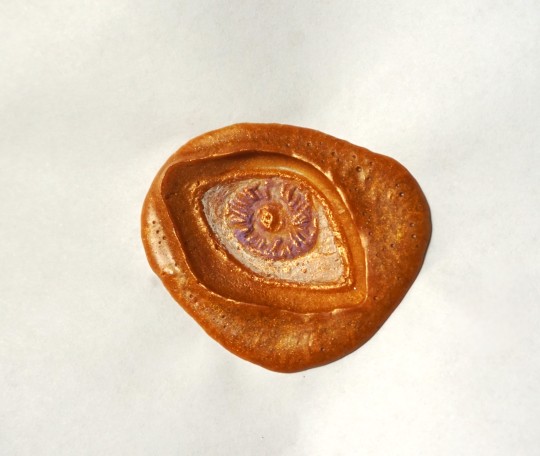
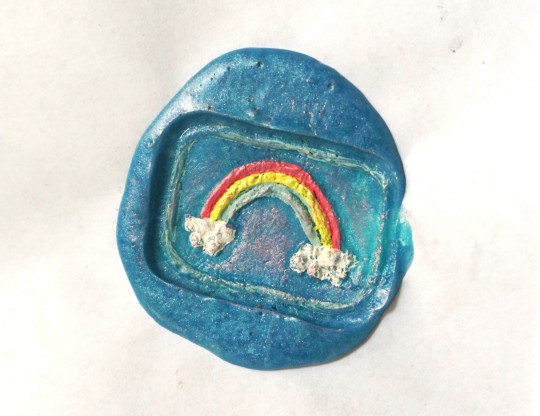
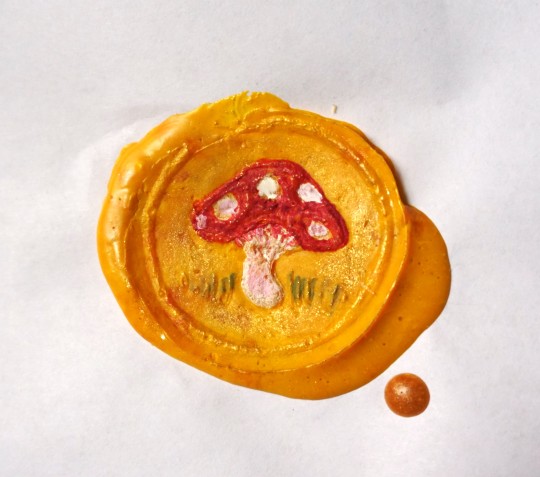
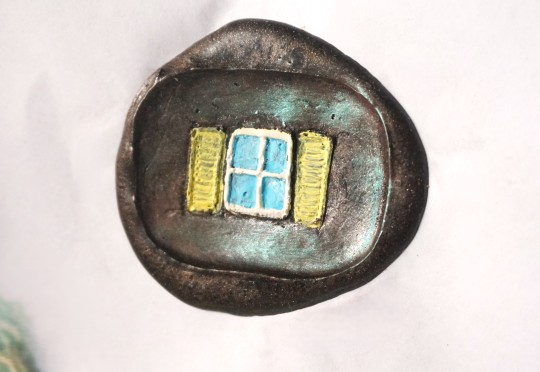

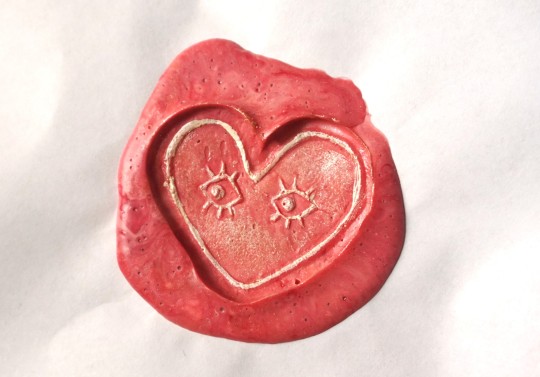

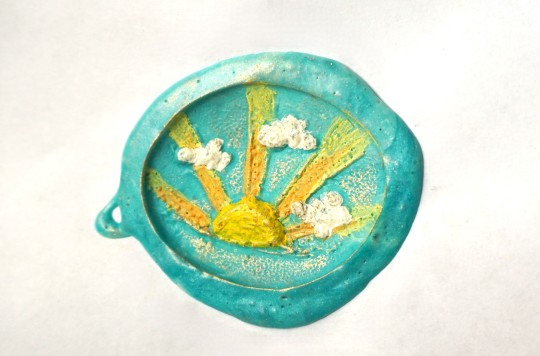

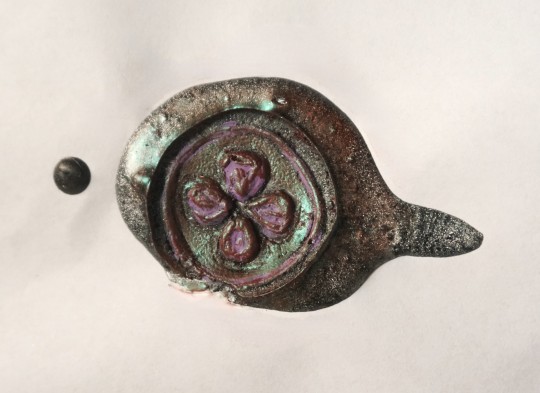
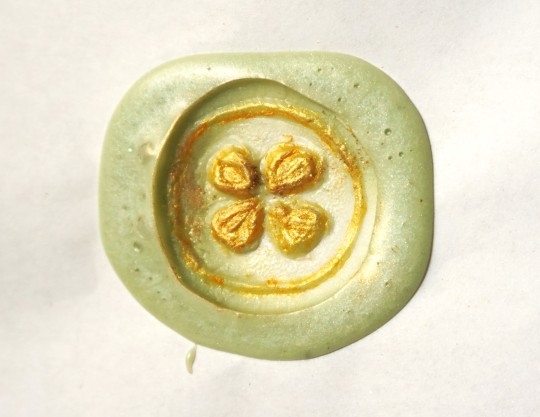
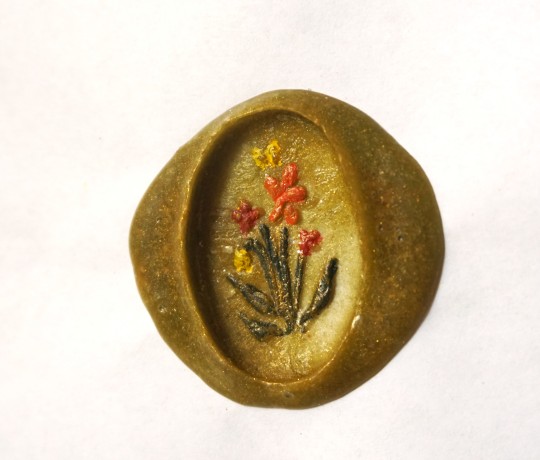
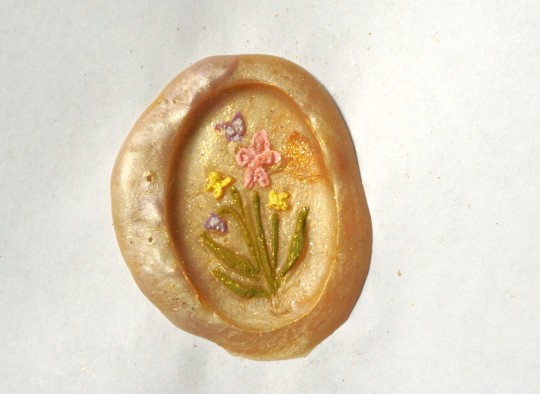
I made a few new wax seal stamps out of clay (like the ones I did for my worldbuilding stuff forever ago), this time just of random symbols that I thought might look good done in the style of painting over the raised part of the wax or etc. :0c Some of them aren't carved deep enough to really show up that well, but overall they worked okay for being clay lol
#wax seal#crafts#wax stamp#stationery#Window one is kind of stinky.. I was imagining like a swirly night sky sort of looking thing so it would be a surreal contrast of a night#sky with a window in the middle that shows a daytime sky - but the silver and purple wax kind of mixed too much together#with the black and it just looks very plain black and not all that starry or anything hjbhj.. Of course the eye is probably my favorite#since all I ever do is draw eyes and still like eye imagery for some reason. The four leaf clover is very lumpy and skrunkty but also it wa#the smallest in size out of all of them so was easier to do multiple stamps of just to try it out.#The heart with eyes wax is actually more swirly in person. I wanted it to be a mix of light pink and red and white. and the wax#did kind of all blend together but in person you can definitely see MORE of the intentional swirlyness. in this it just looks plain pink.#I was going to do one eye in the heart but it looked weird. but now two seems too plain. i could have done 3?? in a pattern.. hmm#alas. I wish I could make actual metal ones. With the clay i have to paint them in a thin layer of olive oil before stamping because#otherwise the wax just kind of gets stuck in the grooves of the clay and then you can't pull it up. Very wacky ''unprofessional'' looking#set up where I'm hot gluing circles of sculpey clay to short stumps of a wooden dowel that I sawed apart with a serrated bread knife#and then using an old paintbrush to put olive oil on them whilst holding a spoon over a yankee candle flame hjbjh#ANYWAY.. I think if I were middle class/rich/etc. this would be one of the main things in my crafting room is like.. SO many colors#of wax. and all different custom made stamps designed by me. which could be much more elaborate in actual metal.. muahaha.... >:)c#RHGghhh... I actually don't want to talk much about it since (this is probably just my Obsessed With My Own World Artist Delusions) I#think I have a really cool idea for a game that could genuinely be successful if i ever get to make it and I don't want to give#everything away and spoil the whole plot/concept in hopes that one day I can actually do it - BUT - a game that I'd like to make after the#visual novel I'm making now has partially to do with the main character working as a sort of writer/scribe/artist assistant in an elven#city (set in my world/with my worldbuilding species and versions of elves and etc) and I was thinking of maybe incorporating#somehow being able to collect little writing type items like these like.. you can get different wax seal patterns or pens or etc. when I do#stuff like this in Real Life it always makes me think of that like.. ouh... this is good research.. what it shall be like to be a littol#elf collecting wax seals and such.. indeed... GRR i need to be finished with my current game NOWWW... i MUST work on other#thingss... aughh... ANYWAY.. yay. accomplishment to do One Single Thing other than Sit In The Summer Heat And Rot#though also hilarious as this was the first cool-ish day that was below 80F in a while hgvh#waking up like 'wow.. i actually feel okay today?? like I could do things?? how mysterious.. I wonder why..?? :0'' Its The Weather You Fool#Tis Always The Weather
252 notes
·
View notes
Text
💙 The Shade of Old Trees by Kryal

💙 The Shade of Old Trees
by Kryal
T, 363k, Wangxian
Summary: “We rest in the shade of trees our ancestors planted.” They called the man in the ice Yiling Laozu, after a folk hero associated with the town in the foothills of the mountains where he was found. No one expected him to be alive! Kay's comments: I have never been less surprised to see that a story was written by a PhD student. The end notes at the end of each chapter are very extensive and just amazing. So much information, so much research, 363k of an incredible story that had me completely hooked. I read it in a week and could hardly focus on anything else, because that story was just so present in the back of my mind and I wanted to know what would happen next. Got introduced to the story by the stunning art by @toffee-arts. I loved the entire plotline of Wei Wuxian having to first learn modern Chinese in order to speak to the scientists (and mostly Lan Zhan) who decided to thaw his supossed corpse. I love how it all came together, how it all wrapped up neatly and the slow burn! The slow burn almost killed me! And how cultivation just awed everyone in modern day!! I just know this story is going to be a favourite I will re-read again and again and there are certainly a lot of details I must have missed during my obsessed binge. Excerpt: Everyone in the observation room tensed. This was, after all, the most delicate point. If it wasn’t going to be possible to remove the ice without beginning to thaw Yiling Laozu, they would have to move very quickly to preserve some of the data they wanted. The cellular damage caused by the freezing process meant that once the ice thawed, the damage would spread rapidly. Lan Wangji glanced at Wen Yuan. “Leave if you need to,” he told the boy quietly. Wen Yuan shook his head. “No, I want to stay…” Lan Wangji wasn’t certain what caught his attention – a flicker of movement from the corner of his eye, a hint of sound, a flash of intuition. He looked up to see Lan Xichen slam into the window. Drop out of sight, stunned by the impact. Beyond, shards of shattered ice fell from black robes scattered across the floor as Yiling Laozu’s body tumbled off the lab table— Twisted. Landed on his feet. Stood. Piercing silvery-grey eyes flickered across the room, wary and confused. Lan Wangji froze. Yiling Laozu was awake. …Yiling Laozu was alive.
pov alternating, modern setting, modern with magic, different first meeting, time travel, time travelling wei wuxian, time travel of sorts, canon divergence, slow burn, worldbuilding, getting together, developing relationship, academia, research, science, bamf wei wuxian, yiling laozu wei wuxian, grief/mourning
~*~
(Please REBLOG as a signal boost for this hard-working author if you like – or think others might like – this story.)
#October 2024#Wangxian Fic Rec#The Untamed#MDZS#Kay's Rec#Kay's Favorite#teen#epic length story > 100k#The Shade of Old Trees#Kryal#pov alternating#modern setting#modern with magic#different first meeting#time travel#time travelling wei wuxian#time travel of sorts#canon divergence#slow burn#worldbuilding#getting together#developing relationship#academia#research#science#bamf wei wuxian#yiling laozu wei wuxian#grief/mourning
213 notes
·
View notes
Text
So annoying when people try to hold alternate-world fantasy to "historical accuracy" standards like. if I wanted historical accuracy I simply would have read/written historical fiction.
The only thing that should matter is if the alt world feels internally consistent/believable. Not "oh but back then" THERE IS NO BACK THEN. IT'S NOT REAL
and just because some aspects of the world (fashion, systems of government, levels of technology) feel consistent with a particular time period in our history doesn't mean that the author is obligated to stick to all other characteristics of that time period. The POINT of alt-world fantasy is to create a world in which the story they want to tell can work, and that's the metric I'm holding things to
#fantasy#high fantasy#worldbuilding#seriously sick of this#Obviously it's common and helpful to use historical research to enhance worldbuilding#but people aren't trying to write an exact representation of medieval europe except with dragons for example#don't you see how that's actually less ''realistic?''#the dragons would change things
2K notes
·
View notes
Text
We're doing a Lord of the Rings movie marathon tomorrow, which will be the first time I've watched the whole trilogy in one sitting. To celebrate, I decided to make a full day of hobbit meals to eat as we watch.
I apologize in advance, but I need a place to geek out about my Book Accurate Shire Cuisine, so this is going to temporarily become a food blog for a few hours tomorrow.
#tolkiens worldbuilding is so granular you can read about the ecology and endemic foods of each part of middle earth#which i did. because i like research and cooking.#and it's been a lot of fun#off topic#not witchcraft#not paganism#lord of the rings#lotr#cooking#mine
172 notes
·
View notes